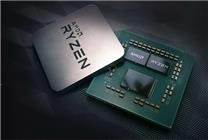TSMC Plans Price Increase for High-End Processes in 2026
In a strategic move to counter various economic pressures, Taiwan Semiconductor Manufacturing Company (TSMC) is considering a price increase of 5% to 10% for its high-end semiconductor production processes in 2026. This proposed increase is aimed at addressing the challenges posed by U.S. tariffs, exchange rate fluctuations, and ongoing supply chain cost pressures.
Price Adjustments Affecting Major Clients
Recent reports indicate that TSMC has communicated its new pricing strategy to its foundry partners, particularly affecting cutting-edge technologies such as 5nm, 4nm, 3nm, and the upcoming 2nm processes. This shift signals that key customers like Nvidia and Apple, reliant on TSMC’s advanced chips, may see their production costs rise as a result of these adjustments.
TSMC’s Chairman Wei Zhejia has previously addressed the topic of price increases with a lighthearted remark, suggesting that certain considerations remain unspoken. His comments reflect the nuanced and often delicate balance that semiconductor manufacturers must navigate in today’s volatile market.
Investment in Advanced Technology
In addition to price adjustments, TSMC is simultaneously advancing its technology portfolio. Reports from late August reveal plans for a substantial investment in a new 1.4nm advanced process factory, set to begin operations in October. The combined investment for this project is projected to range between NT$1.2 trillion and NT$1.5 trillion, which translates approximately to RMB 279.64 billion to 349.549 billion at current exchange rates. The first two manufacturing facilities are expected to achieve mass production by 2028, paving the way for future advancements toward 1nm process technology.
This commitment to innovation highlights TSMC’s ongoing ambition to remain at the forefront of semiconductor manufacturing, further solidifying its position as a leader in the industry.
Impact on the Semiconductor Market
The implications of TSMC’s price increase are significant, not just for the company but for the broader semiconductor market. As TSMC transitions to higher pricing, other companies might follow suit, especially those operating within similar high-end manufacturing sectors. This trend could result in increased costs for consumer electronics and other tech products that rely heavily on these advanced chips.
Moreover, the need to innovate and invest in future technology is crucial for staying competitive. As the demand for more efficient and powerful chips continues to rise, TSMC’s focus on advanced manufacturing processes may ultimately serve as a strategic advantage in a challenging economic landscape.
Conclusion
As TSMC prepares for potential price hikes and significant investments in advanced technology, both industry stakeholders and consumers must keep a close eye on these developments. The company’s moves will undoubtedly shape the pricing dynamics within the semiconductor market and impact major tech players relying on their chips. The semiconductor industry is at a pivotal juncture, and how companies like TSMC navigate the complexities of pricing, investment, and innovation will determine their future success in this fast-evolving field.










